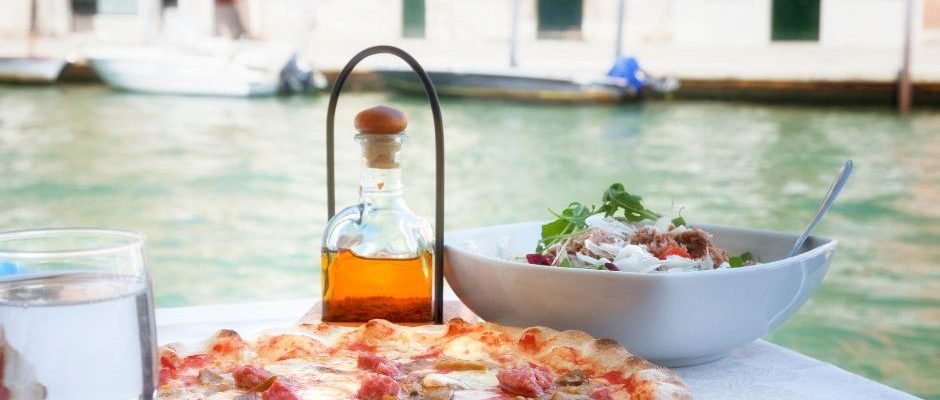Between France where he grew up and Italy where his family is from, Marco does not lack theatricality. So it’s no surprise to see him choke in front of the restaurant’s dessert menu. The Blue House. “A Nutella tiramisu? !!! My Rital grandparents would be rolling over in their graves…” Except that with all due respect to Marco’s ancestors, if they were alive, they would be more wondering what a tiramisu is than to be outraged to see Nutella there. And for good reason, the dish, presented as one of the pillars of La Botte, only appeared in cookbooks in the 1980s.
A dessert that illustrates the sweet deception in which Italian gastronomy delights. Who has never heard that you should definitely not put crème fraîche in carbonara? Or that in Italy, no one drinks cappuccino after 11 a.m.? Italian recipes are centuries-old traditions, where the slightest change of ingredient is sacrilege. But in fact, most of them were not known in La Botte before the 1960s. The first carbonara recipe, for example, dates back to 1954. And comes from Chicago.
“An exaggeration of the attention paid to the purity of a recipe”
Since one is never betrayed better than by one’s own, it was an Italian who decided to reveal the truth. This is Alberto Grandi, academic and author of Designation of invented origin ( “Invented designation of origin”, not translated in France, 2018) and its podcast DOI, around this great mystification. If the audience success was there, Alberto Grandi almost became persona non grata in his own country. This is because we do not attack the gastronational novel with complete impunity.
“I would not talk about Italian cuisine as a lie,” defends Beniamino Morante, journalist in charge of Italy at International mail. Rather an exaggeration of the attention paid to the purity of a recipe. » He himself led the “What if pizza wasn’t Italian?” » [mai 2023]which was inspired by an article in Financial Times, went to meet Alberto Grandi.
Mama’s plates are not what you think
To think that in the post-war years, ruined Italy was struggling over the cooking time of pasta is pure anachronism. “The priority was to eat; the population, very poor, made do with what they had,” recalls Nathalie Louisgrand, teacher-researcher specializing in gastronomy at the Grenoble School of Management.
Beniamino Morante only has to ask his septuagenarian mother for the dishes from his childhood. “There were very few pizzas,” he recounts for 20 minutes. A resident of Grosseto, a town of 80,000 inhabitants in Tuscany, “seeing a pizzeria was as exotic at the time as a sushi restaurant is today. » “Italian” cuisine actually comes from the south, and only took root throughout the country in the very last decades of the 20th century, driven by the Italian economic miracle.
The lack of the country and the sacralization of the stomach
“It was massive industrialization that led to this diffusion,” recalls Nathalie Louisgrand. A large part of popular food was initially very industrial, especially ice cream, before becoming artisanal very recently,” continues the expert. And while we’re on the subject of lèse-majesté crimes: mama Morante remembers eating carbonara with crème fraîche in a restaurant in Italy. Courage Beniamino.
One question remains: how can a fable as big as Santa Claus work so well? Regardless of the country of origin, if there is one thing that is easily exaggerated, it is the food, continues Nathalie Louisgrand. Example in France with the (tiring) debate on “chocolate or pain au chocolat”. To return to Italy, massive emigration – the Italian diaspora is the second largest in the world behind that from China – has also contributed to this myth. “When a French person lives abroad, what they miss most are the products – camembert, bread, foie gras… However, Italian foods are now found everywhere, like parmesan. These are the recipes that will be sanctified,” explains Beniamino Morante.
A lie too good not to believe
Not to mention that Italian cuisine has taken on the chic style. Which hardly surprises Pierre-Louis Desprez, expert in innovation and marketing: “Italy is the country of luxury culture: clothes, cars, shoes, paintings… It has succeeded in presenting and selling its food as such. Spain could not have done the same, for example. »
And this sacralization is not necessarily a bad thing, according to Beniamino Morante: “The attention paid to food in Italy is more important than in other countries. Just look at the low number of McDonald’s compared to France or the failure of Domino Pizza’s. Food remains pride, with the firm conviction of having the best cuisine in the world. “.
There it is, the key to the success of this lie: the story told is too beautiful not to embrace. “It’s sexier than saying that Italians ate potatoes and beans,” explains Nathalie Louisgrand. It’s good for tourism, good for national pride, good for the plate to say something, even if it’s a lie.” Ok Marco, the world needs to believe your stories. But the world also needs Nutella tiramisu.

